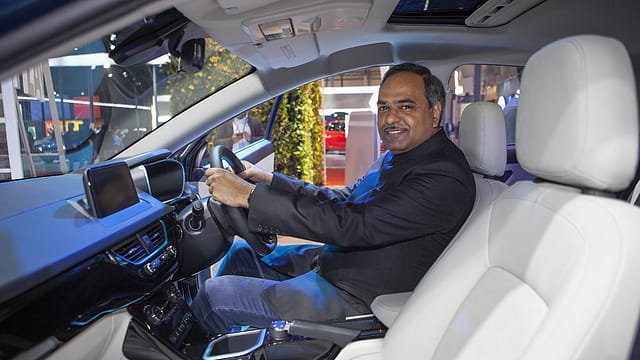Tata Motors key customer of Agratas' cell gigafactory: Shailesh Chandra
ADVERTISEMENT

Tata Motors is working closely with the Tata Group's lithium-ion cell manufacturing subsidiary Agratas Energy to further drive domestic value addition in the electric vehicle business, according to Shailesh Chandra, managing director of Tata Motors Passenger Vehicles and Tata Passenger Electric Mobility.
"We have a certain plan which Agratas will announce. We work very closely with them as anchor customers," Chandra tells Fortune India.
Chandra says cell manufacturing will also get localised in the coming years, adding that the company has shown the biggest commitment to what the government wants—EVs.
"Battery is the biggest cost in an electric vehicle and we as a group are investing in this," he says.
Tata Motors has received four approvals under the production-linked incentive (PLI) scheme for auto and auto components. The PLI-Auto scheme incentivises only those eligible advanced automotive technology products for which a minimum 50% domestic value addition is achieved and certified by testing agencies like the Automotive Research Association of India (ARAI) and the International Centre for Automotive Technology (ICAT).
"50% localisation is the minimum floor level for us. We want to create extra headroom for ourselves so that we are always 5-10% more than that," says Chandra.
The automaker plans to increase localisation in electric vehicles to 85% over the next 3-4 years, which is expected to reduce component costs of EVs by around 15%.
January 2026
Netflix, which has been in India for a decade, has successfully struck a balance between high-class premium content and pricing that attracts a range of customers. Find out how the U.S. streaming giant evolved in India, plus an exclusive interview with CEO Ted Sarandos. Also read about the Best Investments for 2026, and how rising growth and easing inflation will come in handy for finance minister Nirmala Sitharaman as she prepares Budget 2026.
Electric vehicles currently constitute 13-15% of Tata Motors' overall passenger vehicle sales. The carmaker is eyeing 50% of its portfolio to comprise EVs by 2030. "EVs will be 25% of our sales in the next 3-4 years," says Chandra.
Meanwhile, diesel and CNG-powered vehicles contribute around 15-17% each to the company's total product mix. Over half of the PV sales at Tata Motors come from petrol models.
When asked why the company is still producing diesel cars when others have quit the segment citing higher costs due to stringent emission norms, Chandra says Tata Motors has been able to manage costs so that it still makes economic sense for the customer. "It is a combination of multiple engineering interventions which has allowed us to offer a strong value proposition to the customer."
Chandra, however, says when the regulation requirements become so stringent that a certain powertrain cannot exist, the company will follow that rule. Currently, diesel is there only in a few segments and after BS-VI Stage II norms it will further come under pressure, he adds.
Tata Motors is aiming to achieve net zero by 2040 which means there will be a very fast acceleration of EVs, says Chandra. "At the same time, we realise that this transition will take time of 10-15 years. As an OEM, we will keep adapting to how regulation comes. For example, we discontinued so many models which were earlier diesel," he says, adding that regulation lets you exit at the right time.
Tata Motors' PV business has a monthly production capacity of 50,000 units. Once the company's recently acquired Ford plant in Gujarat becomes operational in 2024, the carmaker will have an additional 3 lakh per annum capacity which could also be expanded to 4.2 lakh units annually.
Tata Motors is planning separate showrooms for electric vehicles in cities where EV volumes have reached a certain level. "With the customer profile who buys EVs, we felt the need to create a different brand personality for EVs. We will start going for exclusive EV dealerships in the coming quarters but it will start in phases. The first phase would be about experimenting, learning and then perfecting. The carmaker plans to start with only a few outlets. It is logical because you need to see the implication of this," Chandra explains.
The carmaker on Thursday launched a facelift of India's top-selling electric car, the Nexon.ev. The top trim of the EV comes with a 40.5-kilowatt-hour battery and has an ARAI-certified range of 465 kilometres.
Chandra claims the Nexon.ev is 'very close' to the second-generation EVs. "We did not want to give a 60 kWh-70 kWh battery that would increase the cost. We go with what the market needs. This starts the process of Gen 2 EVs."
The biggest issue as far as the transition to EVs is concerned is the charging infrastructure, according to Chandra. He says this needs to be accelerated as a joint effort by charging infrastructure players and the government.
